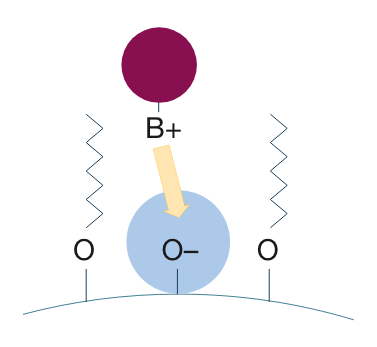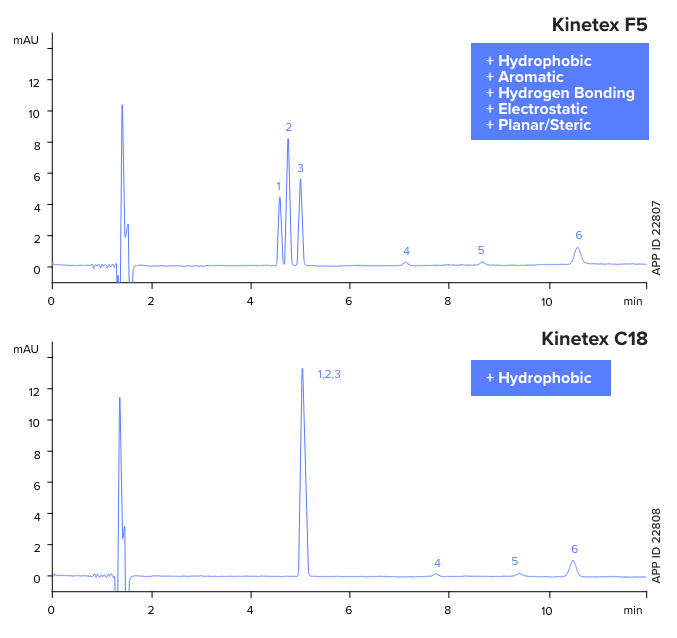Kinetex F5 Core-Shell HPLC Columns

Maximize Retention Interactions and Performance
Combine core-shell performance, multiple retention mechanisms and the Kinetex F5 column’s ability to be run in a variety of separation modes (reversed phase, SFC, 2D LC, and 100% aqueous) and you now have an impeccable method development tool at your disposal.
- Compatible with All Analytical HPLC/UHPLC Systems*
- 100 % Aqueous Mobile Phases Stable
- 5 Mechanisms of Retention and Selectivity
- USP: L43
*Kinetex analytical columns are compatible with all LC system with standard LC column end-fittings threaded in 10-32. Please contact us at Phenomenex.com/chat for any questions and information about fitting compatibility and any other column internal diameters.

Carbon Load null % |
Particle Size 1.7, 2.6, 5 |
Recommended Use Highly reproducible pentafluorophenylpropyl phase, exceptional for halogenated, conjugated, isomeric, or highly polar compounds. |
F5 - A Novel Selectivity For Tough Separations
This pentafluorophenyl propyl column provides a very high degree of steric selectivity to separate structural isomers. The electronegative fluorine groups offer high selectivity for cationic compounds.


Dependable F5 Selectivity
While older pentafluorophenyl phases (PFP, PFPP, F5, etc.) are based on existing bonding techniques and technologies that promote irreproducibility. The Kinetex F5 was meticulously designed by Phenomenex R&D and its customers, to provide consistently accurate and high performance results.

Conditions same for both samples:
Columns:
Kinetex 2.6 µm F5 Ascentis Express 2.7 µm F5 |
Dimension:
50 x 4.6 mm |
Mobile Phase:
A: Water with 0.1% Formic Acid B: Acetonitrile with 0.1% Formic Acid |
Gradient:
5-95 % B over 5 minutes
|
Flow Rate:
1.85 mL/min |
Temperature:
Ambient |
Detection:
UV @ 254 nm |
Sample:
1. Uracil2. Pindolol 3. Chlorpheniramine 4. Nortriptyline 5. 3-Methyl-4-Nitrobenzoic acid 6. 5-Methyl Salicyl Aldehyde 7. Hexaphenone |
Take Advantage of Multiple Interactive Mechanisms

Columns:
Kinetex 2.6 µm F5 Kinetex 2.6 µm C18 |
Dimension:
150 x 4.6 mm |
Mobile Phase:
A: Water with 0.1 % TFA (Trifluoroacetic acid) B: Acetonitrile |
Isocratic:
A/B (65:35)
|
Flow Rate:
1 mL/min |
Temperature:
Ambient |
Detection:
UV @ 254 nm |
Sample:
1. 1,2,3-Trimethoxybenzene2. 1,2-Dimethoxybenzene 3. 1,2,4-Trimethoxybenzene 4. 1,4-Dimethoxybenzene 5. Methoxybenzene 6. 1,3-Dimethoxybenzene |












